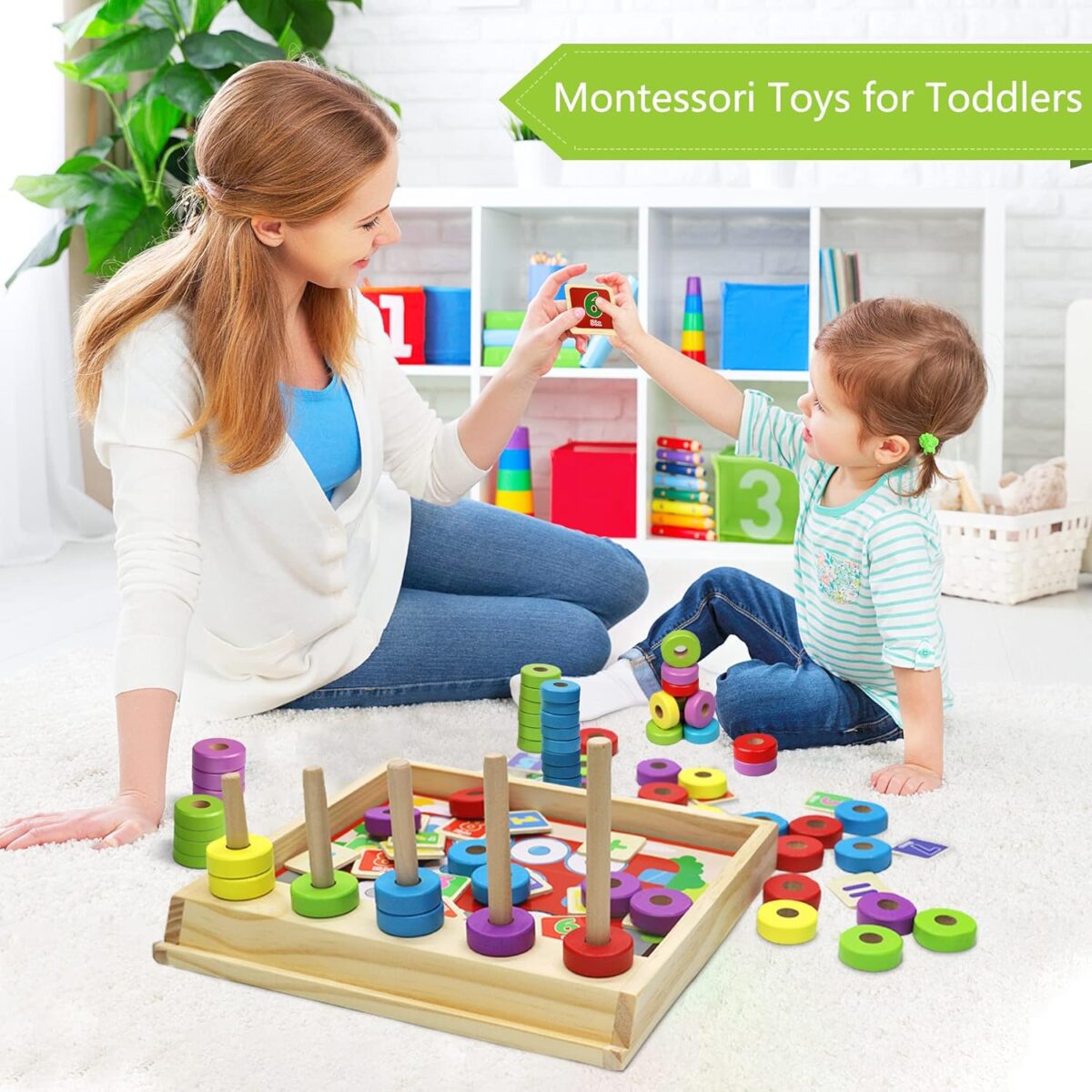
10 best montessori-inspired learning activities for children they will love
Are you looking for innovative ways to enhance your child’s learning experience? Are you eager to ignite their curiosity and foster a love for knowledge?
If so, then you’re in the right place. In this article, we’ll explore 11 Montessori-inspired learning activities for children that will captivate your child’s imagination, ignite their curiosity, and empower them to become confident independent thinkers.
From sensory exploration to practical life skills, math manipulatives to cultural studies, and everything in between, these activities will not only make learning fun but also lay the foundation for a lifelong love of learning.
So, let’s dive in and discover these engaging Montessori-inspired learning activities for children that can transform your child’s educational journey.
This post was created by Marra Robert, OTD, OTRL and contains affiliate links.
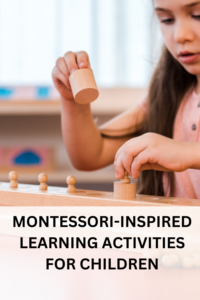
Hi! My name is Marra and I’m a mama and a pediatric occupational therapist who has years of experience working with children with different developmental needs and helping their parents navigate the ups and downs of child development.
I loved being a support person for parents learning about child development and their child’s individual needs.
This post is all about the top Montessori-inspired learning activities for children. Let’s dive in!
10 MONTESSORI-INSPIRED LEARNING ACTIVITIES FOR CHILDREN
Sensory Exploration: Engaging the Senses to Enhance Learning
One essential aspect of a Montessori-inspired learning activities for children is sensory exploration, which actively engages a child’s senses to enhance learning.
By immersing themselves in hands-on sensory activities, children can develop a deeper understanding of the world around them while also honing their cognitive and motor skills.
This is a great Montessori-inspired sensory toy that has so many different sensory experiences available to strengthen your little one’s sensory processing skills.
This will keep your little one busy for hours.
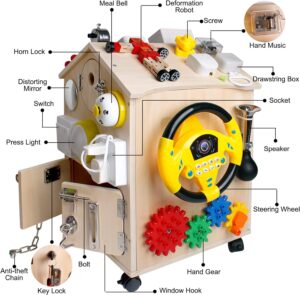
Practical Life Skills: Building Independence and Confidence
In addition to sensory exploration, Montessori-inspired learning activities for children also place a strong emphasis on practical life skills.
These skills are designed to help children build independence and confidence while developing their overall abilities. By engaging in age-appropriate activities that mimic real-world tasks, children can learn important life skills that will serve them well beyond the classroom.
Practical life activities may include pouring, spooning, and transferring objects, which help children refine their fine motor skills and hand-eye coordination.
These seemingly simple tasks also foster concentration and focus, as children must complete each step with care and precision.
Furthermore, practical life activities teach children valuable self-care skills, such as dressing and practicing good hygiene.
These activities promote self-confidence and a sense of accomplishment by encouraging children to take responsibility for their own well-being.
Beyond personal care, practical life activities also extend to practical skills that contribute to the overall functioning of a household. These might include tasks like cleaning, gardening, and setting the table.
By involving children in these activities, they learn how to contribute to their immediate environment and develop important skills such as problem-solving, responsibility, and teamwork.
Through engaging in practical life activities, children gain a sense of autonomy and self-sufficiency. They learn the value of taking care of themselves and their surroundings and the importance of contributing to their community.
These skills, alongside the sensory exploration experiences, lay a solid foundation for future learning and development.
By incorporating practical life skills into your child’s education, you are giving them the tools they need to navigate the world with confidence and independence.

Math Manipulatives: Making Numbers Come to Life
By incorporating practical life skills into your child’s education, you are giving them the tools they need to navigate the world with confidence and independence.
Now, let’s explore the next aspect of a Montessori-inspired learning activities for children: math manipulatives, which bring numbers to life and spark curiosity in young minds.
Math is often seen as daunting, filled with abstract concepts and complex formulas. However, in a Montessori classroom, math is approached in a hands-on and tangible way.
By using math manipulatives, children can interact with numbers and mathematical concepts in a concrete and meaningful manner.
Math manipulatives are physical objects that represent numbers and mathematical operations. They can take the form of colorful blocks, counting beads, or even simple household items like buttons or coins.
These manipulatives serve as visual and sensory aids, allowing children to see and touch the numbers they are working with.
Through the use of math manipulatives, children can explore basic mathematical operations such as addition, subtraction, multiplication, and division.
They can physically manipulate the objects to understand mathematical concepts, making numbers come to life right before their eyes. This hands-on approach helps to solidify their understanding of mathematical principles and fosters a love for numbers and problem-solving.
By engaging in math activities with manipulatives, children develop important cognitive skills such as critical thinking, problem-solving, and logical reasoning.
They learn to think mathematically and develop number sense, which is crucial for future mathematical success. Furthermore, these activities help children build confidence in their mathematical abilities, as they can visually and physically see the results of their calculations.
Incorporating math manipulatives into your child’s learning environment not only strengthens their mathematical skills but also ignites their curiosity and enthusiasm for numbers.
The interactive nature of these manipulatives creates an engaging and enjoyable learning experience, encouraging children to explore and experiment with mathematical concepts.
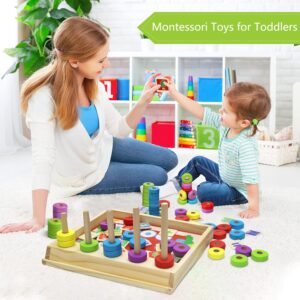
Language Development: Cultivating a Love for Words and Communication
Now that we have explored the hands-on world of math manipulatives, let’s dive into the next aspect of a Montessori-inspired learning activities for children: language development.
Cultivating a love for words and communication is integral to a child’s overall growth and curiosity.
Language development in Montessori-inspired activities for children go beyond simply learning to read and write. It encompasses fostering a deep appreciation for words, effective communication, and the power of language to shape our thoughts and understanding.
Nurturing this love for words can ignite our child’s curiosity and open up a world of endless possibilities.
One of the key principles of Montessori education is exposing children to rich and diverse vocabulary from a young age.
This can be done by surrounding them with various books, engaging them in conversations about their surroundings, and encouraging them to express themselves through writing and storytelling.
By providing this language-rich environment, we allow children to develop strong language skills and a genuine passion for words.
In a Montessori-inspired learning activities for children, they are given the opportunity to explore language through hands-on activities and interactive games.
For example, they may engage in word building exercises using moveable alphabets, where they can physically manipulate letters to form words. This not only reinforces their understanding of letter-sound relationships but also makes the process of learning to read and write a fun and engaging experience.
Furthermore, storytelling plays a central role in language development in Montessori-inspired learning activities for children. Children are encouraged to create their own narratives, fostering their creativity and imagination.
Through storytelling, they learn to articulate their thoughts, express emotions, and develop their own unique voice. This not only enhances their language skills but also boosts their confidence and self-expression.
By cultivating a love for words and communication, we are not only helping our children become proficient readers and writers but also empowering them to become effective communicators and critical thinkers. This sets a solid foundation for their overall growth and curiosity.
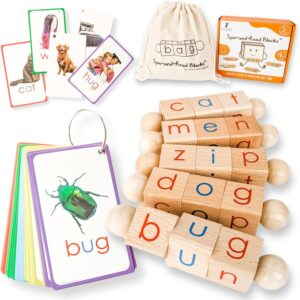
Sensorial Materials: Developing Discrimination and Classification Skills
Now that we have explored the importance of language development in Montessori-inspired learning activities for children let’s move on to the next aspect: sensorial materials and their role in developing discrimination and classification skills.
Montessori-inspired learning activities for children emphasize using sensorial materials to help children develop their senses and refine their perception of the world around them.
These materials are carefully designed to engage multiple senses, allowing children to explore and connect through hands-on experiences.
One of the main goals of using sensorial materials is to develop discrimination skills. Children learn to observe details and make accurate judgments by matching objects based on similarities or differences.
By manipulating the materials and engaging in these activities, children can enhance their ability to discriminate between various attributes such as size, shape, texture, color, and weight.
In addition to discrimination skills, sensorial materials also play a crucial role in developing classification skills. Montessori classrooms often feature activities where children sort objects based on certain criteria, such as sorting objects by color or shape.
By engaging in these activities, children learn about commonalities and differences and begin to develop the ability to classify objects based on specific attributes.
The use of sensorial materials in Montessori education not only enhances children’s cognitive skills but also supports their overall development.
By engaging multiple senses, these materials provide a rich and multisensory learning experience that helps children make connections and understand concepts in a deeper and more meaningful way.
By nurturing discrimination and classification skills through the use of sensorial materials, we are laying the foundation for a child’s scientific exploration and understanding.
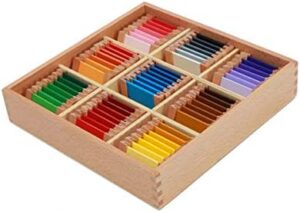
Science Experiments: Encouraging a Sense of Wonder and Discovery
By nurturing discrimination and classification skills through the use of sensorial materials, we are laying the foundation for a child’s scientific exploration and understanding.
These skills serve as a stepping stone towards the next aspect of Montessori-inspired learning activities for children: science experiments that encourage a sense of wonder and discovery.
Incorporating science experiments into the Montessori learning environment not only fosters curiosity but also allows children to engage in hands-on exploration of the natural world.
Through these experiments, children have the opportunity to observe, question, hypothesize, and experiment, developing essential scientific inquiry skills.
One popular science experiment in a Montessori classroom involves exploring the properties of water.
Children can investigate concepts like buoyancy, water displacement, and surface tension through activities such as sink or float experiments, making predictions about which objects will sink or float in a container of water.
Another fascinating experiment that sparks curiosity in young minds is the classic volcano experiment. Children can create their own miniature volcano using simple materials like baking soda, vinegar, and food coloring.
This experiment not only teaches them about chemical reactions but also ignites their imagination as they witness a mini “eruption” right before their eyes.
Furthermore, Montessori-inspired science experiments can extend beyond the classroom walls. Children can be encouraged to observe and document the flora and fauna in their local environment, conducting experiments to learn about the plants and animals around them.
This hands-on approach to science allows children to develop a deeper appreciation and understanding of the natural world while fostering a sense of environmental responsibility.
By incorporating science experiments into the Montessori curriculum, we encourage children to ask questions, make connections, and find answers through exploration.
These experiments not only stimulate their curiosity but also develop critical thinking skills and a scientific mindset. These skills will serve them well not only in their academic journey but also in their lifelong pursuit of knowledge.
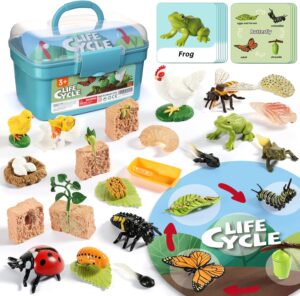
Cultural Studies: Exploring Different Countries and Traditions
This sense of wonder and discovery fostered by science experiments seamlessly sets the stage for the next aspect of a Montessori-inspired learning activities for children: cultural studies.
Children can explore different countries and traditions, broadening their horizons and understanding of the world around them.
Incorporating cultural studies into the Montessori curriculum allows children to not only gain knowledge about different countries and traditions but also develop a deep appreciation for diversity and empathy towards others.
By learning about different cultures, children are exposed to a variety of beliefs, customs, and ways of life, helping them understand that there is more than one way to view the world.
One way to engage children in cultural studies is through interactive activities such as virtual tours. With the help of technology, children can explore famous landmarks, museums, and historical sites around the world.
They can learn about the history and significance of these places, gaining insights into different cultures and time periods. This hands-on approach enables children to feel connected to these places as they virtually travel and immerse themselves in the rich tapestry of global diversity.
Another engaging activity is celebrating festivals and traditions from different countries. Children can learn about these celebrations’ customs, rituals, and significance.
They can create crafts, prepare traditional food, and participate in cultural performances, fostering appreciation and respect for diverse traditions. By actively engaging in these activities, children not only learn about different cultures but also develop a sense of inclusivity and open-mindedness.
Furthermore, storytelling plays a crucial role in cultural studies. Children develop an understanding of different perspectives and worldviews by reading books, listening to folktales, and exploring myths and legends from various cultures.
This exposure to literature from diverse backgrounds not only enhances their language and communication skills but also promotes critical thinking and empathy.
Through the power of storytelling, children can step into the shoes of characters from different cultures, expanding their knowledge and understanding of the world.
By integrating cultural studies into Montessori-inspired activities for children, they gain a holistic education that nurtures their curiosity, empathy, and understanding of the world. As they explore different countries and traditions, they develop a global mindset and appreciation for diversity—an essential foundation for becoming compassionate global citizens.
Art and Creativity: Unleashing Imagination and Self-Expression
In addition to the important role that cultural studies play in Montessori-inspired learnnig activities for children, art and creativity are equally essential for nurturing a child’s curiosity and self-expression.
Through artistic exploration, children can tap into their imagination and unleash their creative potential. Whether it’s painting, drawing, sculpting, or even dancing and singing, engaging in artistic activities allows children to express themselves uniquely and personally.
Art provides a platform for children to explore different mediums and techniques, encouraging them to experiment and take risks.
This experimentation fosters their creativity and helps develop problem-solving skills and the ability to think outside the box. As children dive into the art world, they learn to embrace imperfections and see them as opportunities for growth and improvement.
Furthermore, art allows children to develop fine motor skills and hand-eye coordination. Whether they’re gripping a paintbrush, molding clay, or cutting out shapes, these activities strengthen their dexterity and control over their movements. This benefits their artistic endeavors and supports their overall physical development.
Artistic expression also promotes emotional well-being and self-confidence. Through art, children can express their thoughts, feelings, and experiences without relying solely on verbal communication.
This form of nonverbal expression can be especially beneficial for introverted or shy children who may struggle to express themselves verbally. Art provides them a safe and non-judgmental space to communicate and connect.
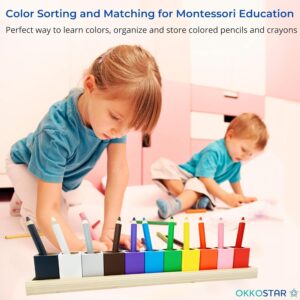
Nature Exploration: Connecting with the Environment
By fostering a love for art and creativity, children develop a deeper appreciation for beauty and aesthetics in the world around them. This appreciation seamlessly sets up the next section on nature exploration and connecting with the environment.
Just as art allows children to express themselves nonverbally, immersing themselves in nature provides another avenue for self-expression and understanding.
Nature exploration not only offers a chance for children to experience the wonders of the natural world firsthand but also allows them to develop a sense of connection and responsibility towards their environment.
Whether it’s taking a hike in the woods, observing insects in the garden, or simply sitting quietly and observing clouds passing by, these activities encourage children to be present in the moment and engage their senses.
Through nature exploration, children can gain a newfound curiosity about the world around them. They may discover different types of plants and animals, learn about various ecosystems, or become fascinated by the changing seasons.
This hands-on experience allows them to connect what they learn in the classroom and what they observe outside, fostering a deeper understanding of their surroundings.
Additionally, spending time in nature promotes physical activity and overall well-being. Running, jumping, and climbing in outdoor spaces not only enhance gross motor skills but also provide a sense of freedom and adventure.
The fresh air and natural light can also have a positive impact on a child’s mood and mental health, boosting their overall sense of happiness and well-being.
Through these experiences, children will not only develop a love for nature but also cultivate a sense of environmental stewardship.
Just as art and creativity enhance emotional well-being, connecting with the environment fosters a holistic approach to learning, setting the stage for the next section on music and movement, which further stimulates cognitive and physical development.

Music and Movement: Stimulating Cognitive and Physical Development
Just as art and creativity enhance emotional well-being, connecting with the environment fosters a holistic approach to learning, setting the stage for the next section on music and movement, which further stimulates cognitive and physical development.
Exploring the world of music and movement not only captivates a child’s attention but also encourages their cognitive and physical development.
Montessori-inspired learning activities for children centered around music and movement provide an engaging and interactive way for children to learn and grow.
One activity involves introducing children to different musical instruments and allowing them to experiment with sounds and rhythms.
This hands-on approach not only enhances their sensory skills but also stimulates their cognitive abilities as they learn to identify and differentiate between various sounds.
Another activity that ignites curiosity and promotes physical development is dancing. Through dance, children develop coordination, balance, and spatial awareness. Dancing to different rhythms and melodies also helps them express themselves creatively and emotionally.
Additionally, singing songs and rhymes together promotes language development and improves memory skills. Through singing, children can learn new vocabulary, practice pronunciation, and develop a sense of rhythm and melody.
By integrating music and movement into their daily routine, parents and educators can provide children with a well-rounded learning experience that nurtures both their cognitive and physical development.
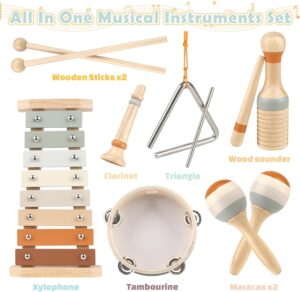
Incorporating Montessori-inspired learning activities for children into your their daily routine can be transformative. It can ignite their curiosity and foster a lifelong love for learning.
By engaging their senses, building practical life skills, and exploring subjects like math, language, and science, you empower your child to become a confident, independent thinker.
You unlock their imagination through cultural studies, art, nature exploration, and music and stimulate cognitive and physical development.
And with outdoor play, you embrace learning through physical activities. It’s time to take action and implement these activities today, witnessing firsthand as your child’s curiosity and passion for knowledge soar to new heights.
